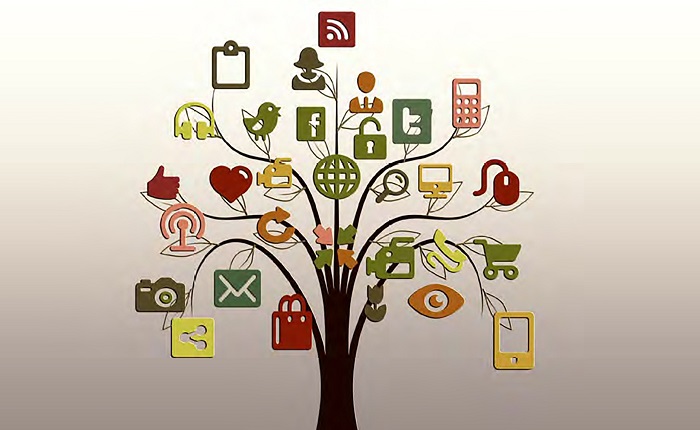Have you ever thought about just how certain books seem to show up all over any place – on social media, at the bookstore within your town, in suggestions from Amazon, or even featured in an email from some author you like? Well, guess what? That visibility is largely due to data. It’s not, in fact, magic or luck. It is entirely due to the large power within data-driven marketing. In the year 2025, book marketing will rely on data analytics. However, what is the precise meaning of that? What, exactly, does that mean? In short, it involves the using of current data regarding readers, sales, and trends for developing more smart and impactful marketing plans.
Relying only on instincts or typical marketing is outdated. At present, data informs us precisely what is effective in addition to what is not, thus helping us market more books to the appropriate readers. Stay tuned to learn how data will make book marketing campaigns 2025 smarter and more successful.
Why Is Data Analytics the Future of Book Marketing?

Here’s the deal: Data allows publishers to understand their audience better than ever before. We can use data to figure out who is purchasing a book, where they are getting it, what they want to read next, and above all, what motivates them to click “buy” (or not). This allows publishers to create book marketing strategies that readers will find relatable and personal. Additionally, by focusing on the most effective marketing campaign books channels, it helps publishers make smart use of their marketing budget.
How Data Transforms Book Promotion and Sales Strategy

In the old days, book marketing was pretty straightforward. Publishers would rely on book tours, print ads, and reviews in big magazines. But in 2025, data is changing all of that. With the help of modern book marketing tools, we can now track which ads work best, which email campaigns get the most clicks, and which book recommendations lead to the highest sales. These tools take the guesswork out of the process—giving you real data to make smarter marketing decisions.
The Evolution: Traditional vs. Data-Driven Marketing
We all know the traditional book promotion campaigns including book fairs, TV ads, and even word of mouth. But now, we’re living in an age where everything is tracked. Data is everywhere, including your email list, social media posts, and online reviews, and it’s helping publishers to connect with their audience more deeply than ever.
Overview of AI, Machine Learning, and Big Data in Publishing
The good news is that modern publishing tools are more intelligent than before. Publishers are using machine learning (ML) and artificial intelligence (AI) to predict which books will be the upcoming bestsellers. A few years ago, it would have been difficult to collect the insights that big data—all of the information from websites, social media, and sales—offers.
Understanding Data Analytics in the Publishing Industry
Data analytics helps authors know which marketing strategies are paying off. It guides you in reaching the right readers and improves your overall promotion. This leads to more sales and a stronger reader base.
First-party data is info you get straight from readers, like emails, purchases, and visits. This kind of data is especially valuable because it reflects the behavior of your specific audience. Third-party data, on the other hand, comes from external sources like analytics services or social media platforms. When used together, these insights can strengthen your book marketing strategies, helping you make more informed decisions and reach readers more effectively.
Information collection and interpretation are the main goals of data analytics in book marketing. Imagine it as a large puzzle. Many bits of information are available to you, such as who is buying your book, what they enjoy, and where they got it. You can create a vision of marketing a new book more effectively and to target the right audience by combining those elements.
Types of Data Publishers Can Use for Campaigns

Now let’s talk about the different types of data that can help publishers with how to make a book advertisement:
Sales Data
This is the backbone of marketing. Sales data includes information from your own website, bookshops, and book marketing campaigns Amazon. You can observe which areas or demographics are responding well, where your books are selling the most, and where you might want to put in more work.
Reader Engagement Data
This covers everything, including online reviews and social media activity (likes, shares, and comments). You may improve your marketing by keeping an eye on what people are saying, how they are sharing your book, and whether they are connecting on Instagram.
Market Trends and Competitive Intelligence
Observing market trends reveals what is in demand. Paying attention to current book marketing trends can help you understand what genres are resonating—whether readers are gravitating toward thrillers, historical fiction, or something else. Use this insight to shape your marketing efforts accordingly, and keep an eye on competitors for inspiration and ideas.
Web Traffic and Email Analytics
Ever wonder how many people are visiting your book’s website? Or whether they’re opening your emails? These figures are quite useful. Keeping track of these insights shows you what’s working and what could use a tweak.
Setting Up a Data-Driven Book Marketing Strategy
It takes more than chance to get your book into the right hands; you need to know what works. You can create marketing that genuinely connects with readers by keeping track of what makes them excited.
Book campaign planning is important before you can begin marketing. Clearly defining your goals is the first stage. For instance, would you like to sell 10,000 copies within the upcoming quarter? Or maybe you’d like to grow your following on social media. Whatever of your objectives, data can help you in keeping track of how you’re doing.
With data, you can break your audience into groups. Romance fans and fantasy lovers look for different things in a book. Understanding these groups—your market segments—helps you market smarter and reach the right readers.
Understanding Book Buyer Personas Based on Demographics and Behavior
Picture the people reading your book. Are they young adults staying up late, parents squeezing in a few pages, or retirees enjoying a quiet read? Do they love holding a book or prefer an e-book? Data helps you create detailed “personas” of your ideal readers based on their age, interests, and buying behavior. This helps you target your marketing efforts much more accurately.
You’re not in this alone! Watching what your competitors do can give you great ideas. Are their social media posts getting lots of likes and comments? How are they pricing their books? This information helps you adjust your strategy and stay ahead of the curve.
With the right tools, marketing becomes easier. Google Analytics tells you who’s visiting your site, and Hootsuite shows how people respond to your posts. Creating the best book marketing campaigns is made easier by these tools.
Leveraging Predictive Analytics for Book Sales Growth
Readers are out there searching for books like yours—you just need to find them. Predictive analytics helps you see trends, understand interests, and connect at the perfect moment. The better you understand readers, the stronger your marketing becomes.
With predictive analytics, you can see patterns from the past and predict future success. No more trial and error! If gardening books do well in spring, you can plan the best book campaigns to catch that wave of interest.
Machine learning tools help us understand what readers like. They can guess what books someone might want next based on what they’ve liked before. This helps you shape your marketing and create books readers will be excited to read.
In 2025, publishers will be able to predict which genres, authors, and themes will be popular. With data-driven tools, they can stay ahead and market books more effectively.
Want to know how to price your book? Historical sales data can give you the answer. If your book’s price is too high, readers might skip it. If it’s too low, you might not earn what you deserve. The right price keeps both you and your readers happy, and data helps you find it.
AI is now smart enough to offer book recommendations tailored just for you. And it’s not just for readers. Publishers can use AI to recommend which books to promote based on a reader’s previous choices.
Personalization and Targeted Book Marketing Using Data

Not every reader is the same, so why market to them the same way? With data, you can reach the right people in a way that feels personal. The more it speaks to them, the more likely they are to pick up your book.
How Publishers Can Use Data to Personalize Reader Engagement
Personalization is huge. Publishers can use data to personalise every connection with readers rather than sending out generic emails or advertisements. For instance, you could recommend related books to a reader who you know loved a specific book.
Targeted ads are a key part of the best book advertising campaigns nowadays. Understanding how to market a book on social media plays a big role in this, as platforms like Facebook and Instagram allow publishers to use data to reach readers who are most likely to be interested in the book. Compared to casting a wide net and hoping for the best, this focused approach is much more effective.
A reader checked out your book but didn’t buy? No worries! With data, you can send a friendly reminder through ads, helping them remember why they were interested in the first place. This strategy often leads to more sales.
Imagine finding more readers who enjoy your book just like your current fans. Social media sites like Facebook and Instagram can help by showing your book to people with similar interests. This way, you can reach the right readers easily and without wasting time.
Email marketing is still one of the most powerful tools. And with data, you can personalize it! Readers want to feel like you understand them. A simple email saying, “Hey, we picked this book for you!” can spark interest and build trust. People appreciate feeling seen, and when a book feels like the right fit, they’re much more likely to dive in.
Optimizing Multi-Channel Book Marketing with Data Insights
To make your book marketing work better, it’s important to know how each channel is doing. Whether it’s your social media, emails, or website, tracking each one helps you see what brings in the most readers and sales.
SEO helps your book show up when people search online. By seeing what readers search for, you can update your book’s page or description to make it easier to find. This means more readers will see your book.
Keyword Research for Authors and Publishers:Your website or book description will rank higher in searches if you include relevant keywords. The right readers will find your book more easily if you have chosen the perfect keywords.
Optimizing Metadata for Book Discoverability:Basic information about your book, such as the title, author, and genre, is called metadata. More people will find it online if you keep it accurate and include relevant keywords.
Ads on Facebook, Google, or Amazon can help you reach more readers, and tracking your growth helps you improve.
Social media shows how many people are liking, commenting, or sharing your posts. But the most important thing is seeing how many actually click to buy your book. By tracking this, you can improve your posts to connect with more readers and boost sales.
Real-Time Data Analytics for Adaptive Book Marketing

With real-time data, you can see how your marketing is doing right now. Instead of waiting weeks to see results, you can look into what works, fix what doesn’t, and make quick changes to improve your campaigns.
The best marketing strategy can often be identified through A/B testing. By testing two versions with different headlines, images, or content, you can see which ad or post performs better. This method is commonly used in eBook marketing services to refine campaigns and ensure you’re always choosing the most effective book marketing plan.
Heatmaps show where people click the most on your website. If lots of people click on your book cover but don’t buy, something might be getting in their way. This helps you see what’s working and what needs fixing.
You can adjust your marketing strategy as you go with real-time data. Ads that aren’t working can be changed immediately rather than waiting, saving you both money and time.
Measuring ROI and Key Performance Metrics for Book Marketing
Want to know if your book marketing is working? Check your sales, website visits, and ad spend. These numbers reveal what’s working and what’s not.
Conversion rate is just a way to see how many people buy your book after seeing your ad. If a lot of them do, your marketing is on point. Keeping an eye on sales helps you know what’s working.
Engagement is just how people respond to your posts—whether they like, comment, or share. The more they engage, the more interested they are in what you’re sharing. Retention is about how many people keep following you or buy your books again. Both help you reach more people and keep them interested.
It’s important to figure out whether marketing is helping boost book sales, especially since it involves a financial investment. The cost per acquisition (CPA) shows how much is spent to sell each book, while ROI helps determine if you’re earning more than you’re spending. These metrics are particularly useful when evaluating the effectiveness of children’s book marketing services, allowing authors and publishers to measure the true value of their campaigns.
Charts and graphs turn your data into an easy-to-read story about what’s working and what’s not. This helps you make smart choices and sell more books without wasting money.
Looking at real-world examples of book marketing campaigns that used data can teach you a lot.
Yellowface by R.F. Kuang: This book blew up because of a mix of smart marketing and internet buzz. It’s about cultural appropriation, and people had a lot to say. Publishers jumped on the conversation, got book influencers involved, and turned it into a bestseller.
Tomorrow, and Tomorrow, and Tomorrow by Gabrielle Zevin: This book became a hit because it blends gaming nostalgia with a great story. Publishers targeted the right readers, but BookTok made it huge. People couldn’t stop talking about it, and soon, everyone was reading it.
Emerging Trends in Data-Driven Book Marketing for 2025

Book marketing will become far smarter in the future thanks to AI and machine learning. By studying people’s reading preferences, they could suggest books that match with those interests. This helps writers sell more books and connect with the right readers.
Blockchain is a secure way to protect your book’s data. It’s becoming more important in publishing because it keeps sales data and personal information safe from tampering. Using blockchain ensures your marketing data stays secure.
What if readers could step right into your book’s world and see the story unfold around them? AR and VR make that possible. This makes reading a special experience and creates a sense of connection among readers.
Readers are paying more attention to how their data is used, making privacy a big deal in 2025. Publishers need to protect this information and follow the rules to stay out of trouble. Being open about data privacy helps build trust and keeps marketing in check.
Conclusion
So, here is the key point: Data analytics is very important; it is surely needed by book publishers. With understanding as well as using quite a few data points, publishers can create successful book marketing campaigns, connect with an audience that is precise, in addition to ultimately sell books that are additional. In 2025, data remains key to success, no matter if studying sales trends, predicting future demands, or customizing marketing plans.
It is important to note also that it involves sharply understanding your audience, and providing to them their own desires, beyond only the statistics. Therefore, proceed onward in the course of book marketing. Head in the direction of the future that data creates. That soon-to-be published novel may be simply a click away!
Frequently Asked Questions
Make a simple video talking about your book. Share it online to help people get excited and want to learn more about it.
Social media ads are very effective because they let you target the right audience and show your book to people who will love it.
Plan your book campaign. Set goals, like getting reviews or selling a certain number of books, and write down all the steps you will take. To get your book noticed, start by sharing it on social media. Run giveaways and ask readers for reviews.
To create a marketing strategy, you must plan how to reach your readers.
- Know what makes your book special.
- Understand who your readers are and where they are.
- Set simple goals, like getting reviews or selling more copies.
- Choose where to promote, like social media or blogs.
- Create fun and interesting content to share.
- Track how well your plan is working.





